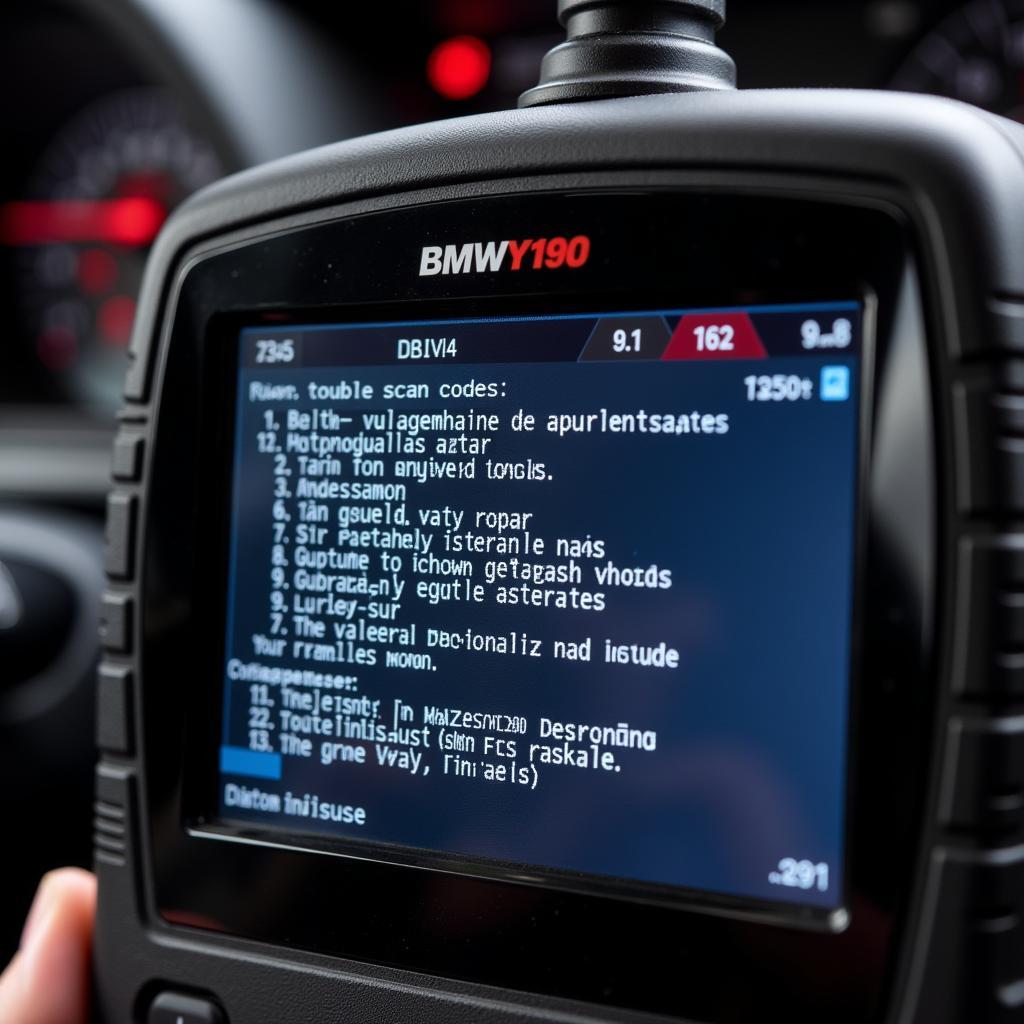The iconic, pulsating blue scanner light of KITT from the 80s TV show Knight Rider still captivates car enthusiasts today. While a talking, crime-fighting car remains a fantasy, the technology behind KITT’s futuristic diagnostics system has evolved into the sophisticated car diagnostic tools we use today. This article delves into the world of car diagnostics, bridging the gap between the “Knight Rider Blue Scanner Car” dream and the reality of modern car repair.
From KITT to OBD-II: The Evolution of Car Diagnostics
KITT’s ability to self-diagnose and communicate issues to Michael Knight seemed like science fiction. However, this fictional concept foreshadowed the development of On-Board Diagnostics (OBD), a standardized system that allows mechanics and car owners to communicate with a vehicle’s computer system.
The evolution from rudimentary systems to today’s sophisticated OBD-II technology has revolutionized car repair. With OBD-II, gone are the days of relying solely on mechanical intuition. Now, technicians can access a wealth of data from the car’s Engine Control Unit (ECU), enabling them to pinpoint issues with greater accuracy and efficiency.
[image-1|knight-rider-car-scanner|Knight Rider Car Scanner|Image of KITT’s dashboard showcasing its futuristic blue scanner light and advanced computer system, highlighting the fictional representation of car diagnostics in the 80s.]
Understanding the “Blue Scanner”: How Modern Car Diagnostic Tools Work
While we don’t have KITT’s voice to guide us, modern car diagnostic tools serve as our digital mechanics. These tools, often handheld devices, connect to the vehicle’s OBD-II port, usually located under the dashboard on the driver’s side.
Once connected, the diagnostic tool communicates with the car’s ECU, reading and displaying diagnostic trouble codes (DTCs). These codes act as a digital language, conveying specific information about the car’s health and any potential problems.
[image-2|modern-car-diagnostic-tool|Modern Car Diagnostic Tool| A mechanic using a modern car diagnostic tool plugged into the OBD-II port of a vehicle. The tool’s screen displays diagnostic codes and live data streams from the car’s sensors.]
Beyond the Codes: Interpreting and Addressing Car Problems
Simply reading DTCs is just the first step. Understanding the meaning of these codes and their underlying causes requires further investigation. Here’s where the expertise of a qualified mechanic or a knowledgeable car owner comes into play.
For instance, a code related to the oxygen sensor doesn’t automatically mean sensor replacement. It could point towards a vacuum leak, a faulty fuel injector, or even a wiring issue. Experienced mechanics can analyze the code in conjunction with other symptoms, vehicle history, and live data from the diagnostic tool to diagnose the root cause effectively.
Empowering Car Owners: DIY Diagnostics with OBD-II Scanners
The advent of affordable and user-friendly OBD-II scanners has empowered car owners to delve into the world of car diagnostics. These scanners, readily available online and at auto parts stores, provide a gateway to understanding your car’s health.
By connecting an OBD-II scanner to your car, you can:
- Read and clear DTCs
- View live data from various sensors
- Monitor engine performance parameters
- Check emissions readiness status
[image-3|obd-ii-scanner-connected-to-car|OBD-II Scanner Connected to Car| A close-up image of an OBD-II scanner plugged into a car’s OBD-II port. The scanner’s screen displays a diagnostic trouble code, signifying a potential issue with the vehicle.]
While DIY diagnostics can be empowering, remember that complex issues often require the expertise of a qualified mechanic. Using a diagnostic tool provides valuable information but doesn’t replace the need for professional diagnosis and repair in many cases.
The Future of Car Diagnostics: Towards a More Connected and Intuitive Experience
The world of car diagnostics continues to evolve at a rapid pace. Emerging technologies like telematics, cloud-based diagnostics, and predictive maintenance are shaping the future of car repair.
Imagine a scenario where your car automatically diagnoses a potential issue, contacts your preferred mechanic, schedules an appointment, and even orders the necessary parts – all before you even notice a problem. While this may sound like a scene from Knight Rider, it’s closer to reality than we might think.
Conclusion: Embracing the Power of Technology in Car Repair
The “Knight Rider blue scanner car” might have been a fictional concept, but it ignited a spark that led to the sophisticated car diagnostic tools we have today. Understanding how these tools work empowers car owners and mechanics alike, enabling us to diagnose and address car problems with greater accuracy and efficiency. As technology continues to advance, the future of car repair promises to be even more connected, intuitive, and perhaps, dare we say, a little bit more like KITT.
For all your car diagnostic needs and expert advice, contact ScanToolUS at +1 (641) 206-8880 or visit our office at 1615 S Laramie Ave, Cicero, IL 60804, USA.

